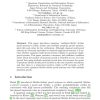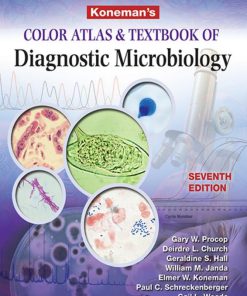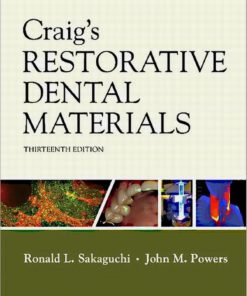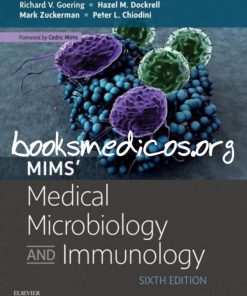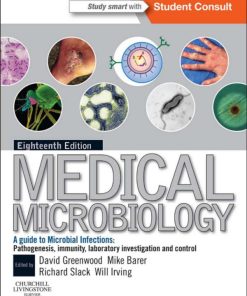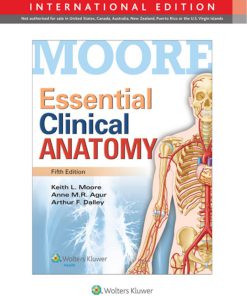Mims Medical Microbiology 5th Edition by Richard Goering, Hazel M Dockrell, Mark Zuckerman, Ivan Roitt, Peter L Chiodini ISBN 0723436010 9780808924401
$50.00 Original price was: $50.00.$25.00Current price is: $25.00.
Authors:Elsevier Health Sciences , Series:Pathology [188] , Tags:Mims’ Medical Microbiology , Author sort:Sciences, Elsevier Health , Ids:9780723436010 , Languages:Languages:eng , Published:Published:Jul 2012 , Publisher:Elsevier Ltd , Comments:Comments:Mims’ Medical Microbiology, 5, (2013) 978-0-7234-3601-0
Mims Medical Microbiology 5th Edition by Richard Goering, Hazel M Dockrell, Mark Zuckerman, Ivan Roitt, Peter L Chiodini – Ebook PDF Instant Download/Delivery. 0723436010, 9780808924401
Full download Mims Medical Microbiology 5th Edition after payment
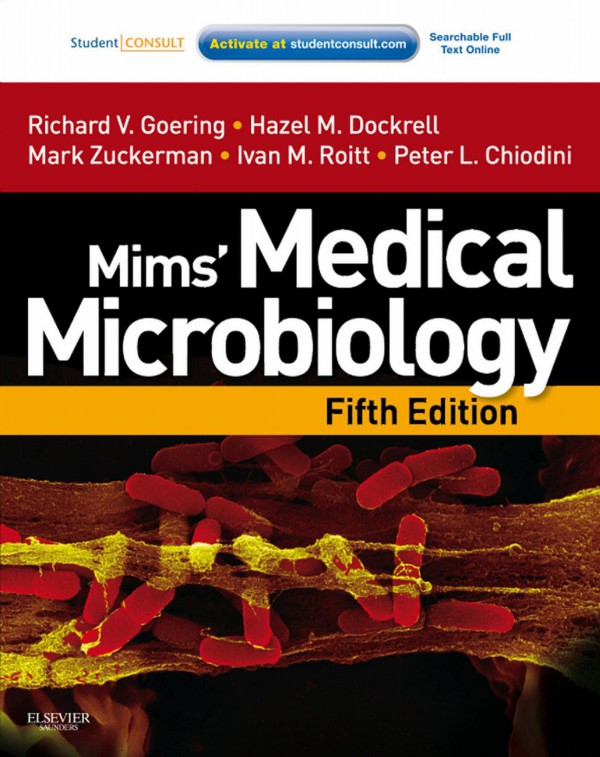
Product details:
ISBN 10: 0723436010
ISBN 13: 9780808924401
Author: Richard Goering, Hazel M Dockrell, Mark Zuckerman, Ivan Roitt, Peter L Chiodini
Mims’ Microbiology makes it easy for you to learn the microbiology and basic immunology concepts you need to know for your courses and USMLE. Using a clinically relevant, systems-based approach, this popular medical textbook accessibly explains the microbiology of the agents that cause diseases and the diseases that affect individual organ systems. With lavish illustrations and straightforward, accessible explanations, Mims’ Microbiology makes this complex subject simple to understand and remember.
- Learn about infections in the context of major body systems and understand why these are environments in which microbes can establish themselves, flourish, and give rise to pathologic changes. This systems-based approach to microbiology employs integrated and case-based teaching that places the “bug parade” into a clinical context.
- Grasp and retain vital concepts easily thanks to a user-friendly color-coded format, succinct text, key concept boxes, and dynamic illustrations.
- Effectively review for problem-based courses with the help of chapter introductions and “Lessons in Microbiology” text boxes that highlight the clinical relevance of the material, offer easy access to key concepts, and provide valuable review tools.
- Approach microbiology by body system or by pathogen through an extensively cross-referenced “Pathogen Review” section.
- Access the complete contents online at studentconsult.com, along with downloadable illustrations…150 multiple choice review questions… “Pathogen Parade”…and many other features to enhance learning and retention.
- Enhance your learning and absorb complex information in an interactive, dynamic waywith Pathogen Parade – a quickly searchable online glossary of viruses, bacteria, and fungi.
- Deepen your understanding of epidemiology and the important role it plays in providing evidence-based identification of key risk factors for disease and targets for preventive medicine. A completely re-written chapter on this topic keeps abreast of the very latest findings.
Mims Medical Microbiology 5th Table of contents:
Part 1: Introduction to Microbiology
-
Introduction to Medical Microbiology
- Overview of Microbiology in Medicine
- The Role of Microorganisms in Health and Disease
- The History and Evolution of Medical Microbiology
- Fundamental Concepts in Microbial Pathogenesis
-
Structure and Function of Microorganisms
- Prokaryotic vs. Eukaryotic Cells
- Bacterial Structure and Function
- Viruses, Fungi, and Protozoa
- Microbial Growth and Metabolism
-
Microbial Genetics and Genomics
- Gene Expression and Regulation in Microorganisms
- Mechanisms of Genetic Transfer: Conjugation, Transformation, and Transduction
- Molecular Techniques in Microbiology: PCR, Sequencing, and Genomic Databases
Part 2: Host-Pathogen Interactions
-
Host Defense Mechanisms
- Innate Immunity: Barriers and Immune Cells
- Adaptive Immunity: Antibodies, T-cells, and Immune Memory
- The Role of the Immune System in Defense Against Infection
- Immunopathology and Inflammation
-
Microbial Pathogenesis
- Mechanisms of Virulence
- Adherence, Invasion, and Evasion of Host Defenses
- Toxins and Their Effects on Host Cells
- Host Responses to Infection: The Balance Between Defense and Damage
-
The Pathogenesis of Bacterial Infections
- Gram-positive and Gram-negative Bacteria
- Common Pathogens: Staphylococcus, Streptococcus, Escherichia coli, Mycobacterium tuberculosis
- Infection Strategies and Disease Syndromes
-
The Pathogenesis of Viral Infections
- Viral Replication Cycles
- Common Viral Pathogens: Influenza, Herpesvirus, HIV, Hepatitis Viruses
- Immune Evasion by Viruses
- Viral-associated Diseases
-
The Pathogenesis of Fungal and Parasitic Infections
- Fungal Pathogens: Candida, Aspergillus, and Cryptococcus
- Protozoa and Helminths as Human Pathogens
- The Mechanisms of Disease in Fungal and Parasitic Infections
Part 3: Diagnostic Microbiology
-
Microbial Identification and Diagnostic Techniques
- Culture Media and Methods for Isolation
- Microscopic Examination: Gram Staining, Acid-fast Staining, and Special Stains
- Biochemical Testing for Identification
- Molecular Diagnostic Techniques: PCR, Sequencing, and Nucleic Acid Hybridization
-
Immunological Techniques in Microbial Diagnosis
- Serology: Antigen and Antibody Detection
- ELISA, Western Blot, and Immunofluorescence
- Flow Cytometry and Other Advanced Immunodiagnostic Methods
-
Antimicrobial Susceptibility Testing
- Methods for Testing Antibiotic Resistance
- MIC (Minimum Inhibitory Concentration) Testing
- Resistance Mechanisms in Bacteria, Fungi, and Viruses
- Role of Antimicrobial Resistance in Treatment Failure
Part 4: Clinical Microbiology and Infectious Diseases
-
Bacterial Infections
- Infections of the Respiratory System: Pneumonia, Tuberculosis, and Bronchitis
- Gastrointestinal Infections: Diarrhea, Salmonella, and Clostridium difficile
- Urinary Tract Infections: Escherichia coli and Other Uropathogens
- Skin and Soft Tissue Infections: Staphylococcus aureus, Streptococcus pyogenes
- Bloodstream and Systemic Infections: Septicemia, Endocarditis, and Meningitis
-
Viral Infections
- Respiratory Infections: Influenza, Rhinovirus, and SARS-CoV-2
- Hepatic Infections: Hepatitis Viruses
- HIV and AIDS: Pathogenesis, Diagnosis, and Treatment
- Neurotropic Viruses: Herpes Simplex, Rabies, and Polio
- Emerging Viral Infections: Zika, Ebola, and Novel Coronaviruses
-
Fungal and Parasitic Infections
- Superficial and Systemic Fungal Infections: Candida, Aspergillus, and Cryptococcus
- Parasitic Infections: Malaria, Leishmaniasis, and Trypanosomiasis
- Soil-borne and Water-borne Pathogens: Toxoplasma and Schistosomiasis
- Diagnosis and Treatment of Fungal and Parasitic Diseases
Part 5: Prevention and Control of Infectious Diseases
-
Vaccines and Immunization
- Principles of Vaccination
- Vaccines for Bacterial, Viral, and Fungal Infections
- Vaccine Development and Challenges
- Immunization Schedules and Global Vaccination Programs
-
Infection Control and Public Health
- Principles of Infection Control in Hospitals and Communities
- Hand Hygiene, Personal Protective Equipment, and Environmental Control
- Surveillance and Epidemiology of Infectious Diseases
- Outbreak Investigation and Control Measures
-
Antibiotics and Antimicrobial Therapy
- Mechanisms of Action of Antimicrobials
- Antibiotics for Bacterial Infections
- Antivirals, Antifungals, and Antiprotozoals
- Antimicrobial Stewardship and Resistance Management
Part 6: Emerging and Re-emerging Infectious Diseases
-
Emerging Infectious Diseases
- New and Emerging Pathogens
- Factors Driving the Emergence of New Infectious Diseases
- Global Health Challenges and Responses
- Case Studies: Ebola, Zika, and Other Emerging Pathogens
-
Re-emerging Infectious Diseases
- Factors Contributing to the Resurgence of Previously Controlled Diseases
- Antimicrobial Resistance and Its Impact on Disease Control
- Vaccination and Control Measures for Re-emerging Diseases
People also search for Mims Medical Microbiology 5th:
basic microbiology & infection control for midwives
basic microbiology and infection control for midwives
basic infection control procedures
what is infection control pdf
basic infection control guidelines
You may also like…
eBook PDF
Mims Medical Microbiology Electronic 6th Edition by Richard Goering ISBN 070207201X 9780702072017
eBook PDF
Encyclopedia of Immunology 2nd Edition by Peter Delves, Ivan Roitt ISBN 0122267656 9780122267659


